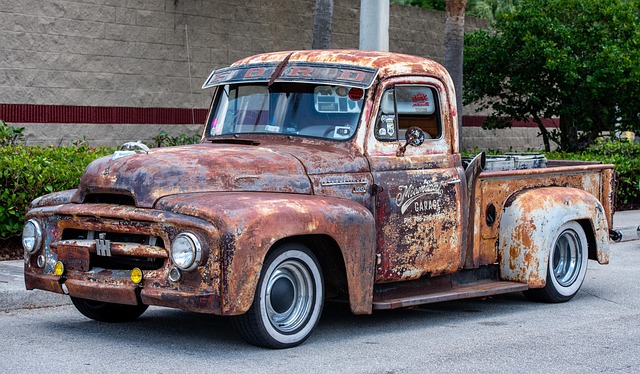Register Car California: VIN Verifier & License Plate Steps
Looking to register your car in California? This comprehensive guide walks you through the process, ensuring a smooth experience. First, understand the state’s unique car registration requirements. Ga…….

Looking to register your car in California? This comprehensive guide walks you through the process, ensuring a smooth experience. First, understand the state’s unique car registration requirements. Gather essential documents, including proof of ownership and insurance. Verify your vehicle’s identity using a VIN verifier for accuracy. Complete application forms, pay registration fees, and obtain license plates to legally hit the road. Follow these steps for a hassle-free California car registration.
- Understand California Car Registration Requirements
- Gather Necessary Documents for Registration
- Verify Vehicle Identity Using VIN
- Complete and Submit Application Forms
- Pay Registration Fees and Obtain License Plate
Understand California Car Registration Requirements

Before registering your car in California, it’s crucial to understand the state’s specific requirements. The process involves several key steps and documents. One essential aspect is ensuring that your vehicle has a valid and accurate Vehicle Identification Number (VIN) inspection. This verification process helps prevent fraud and ensures all cars on California roads meet safety standards.
In California, a mobile VIN verification or inspection service can be particularly useful. These services allow you to have your VIN checked remotely, making it convenient for those who may not have the time or means to visit an official inspection station. By utilizing a reliable mobile vin verifier, you streamline the registration process and ensure your car meets all necessary criteria before hitting the open road in the Golden State.
Gather Necessary Documents for Registration

Before registering your car in California, you’ll need to gather several key documents. One crucial piece is the Vehicle Identification Number (VIN) – this unique 17-character code is like a fingerprint for your vehicle and can be found on the vehicle’s registration label or in its owner’s manual. For added convenience and accuracy, many individuals opt for a mobile VIN verification service, which allows them to get this critical information swiftly using their smartphones.
Additionally, you’ll require proof of ownership, typically a title document, along with valid identification such as a driver’s license. If you’ve recently purchased the car from a dealership or private seller, they might provide these documents during the sale. However, if you’re transferring the registration yourself, ensure that all paperwork is in order and legible to avoid any delays. A mobile VIN inspection can be particularly helpful here to verify the vehicle’s history and condition before finalizing the registration process.
Verify Vehicle Identity Using VIN

Before you can register your car in California, it’s crucial to verify the vehicle’s identity using its unique Vehicle Identification Number (VIN). This process ensures that the car is genuine and has not been reported as stolen or had its history tampered with. A VIN verifier, whether it’s a mobile service or an inspection at a designated location, checks this number against vast databases to pull up the vehicle’s detailed history, including previous owners, maintenance records, and any accidents or damage.
Using a mobile VIN verifier is a convenient option for California residents as it allows them to complete this step from the comfort of their home. Alternatively, you can also opt for traditional vin inspection at a local service center. Either way, having this crucial information ready will streamline the car registration process and ensure that your vehicle’s history checks out.
Complete and Submit Application Forms

To start the car registration process in California, the first step is to complete and submit the necessary application forms. You’ll need to fill out both the Application for Title and Registration (Form DVW-140) and the Vehicle Identification Number (VIN) Verifier Statement (Form DVW-57). These forms are crucial for verifying your vehicle’s history, including its previous ownership and any relevant safety standards.
When completing these forms, ensure all information is accurate and up-to-date. The VIN inspection is a vital part of the registration process, and you can use a mobile VIN verifier to streamline this step. Some services even offer mobile vin verification, allowing for convenient and efficient completion of your paperwork from the comfort of your home or garage.
Pay Registration Fees and Obtain License Plate

After ensuring your vehicle meets all safety and emissions standards during the California smog test, it’s time to pay the registration fees. The cost varies depending on the type and age of your vehicle, so be sure to check with the DMV or use their online calculator. You can typically pay via credit card, debit card, or check. Once registered, you’ll receive a Registration Certificate and, if applicable, an emissions sticker.
Before driving your newly registered car on California roads, you must obtain license plates. This process involves taking your vehicle and registration documents to a DMV field office. A representative will issue your plates after verifying your vehicle’s details using the Vehicle Identification Number (VIN) through a VIN verifier, either manually or via a mobile VIN verification service. Ensure your plates are displayed properly on your vehicle for legal driving.
Registering a car in California involves several straightforward steps, from understanding the state’s requirements to verifying vehicle identity using a VIN (vehicle identification number) checker. By gathering all necessary documents, completing application forms, and paying the registration fees, you can promptly obtain your license plate and legally operate your vehicle in the Golden State. Remember to always use reliable vin verifier tools to ensure accuracy during the process.







